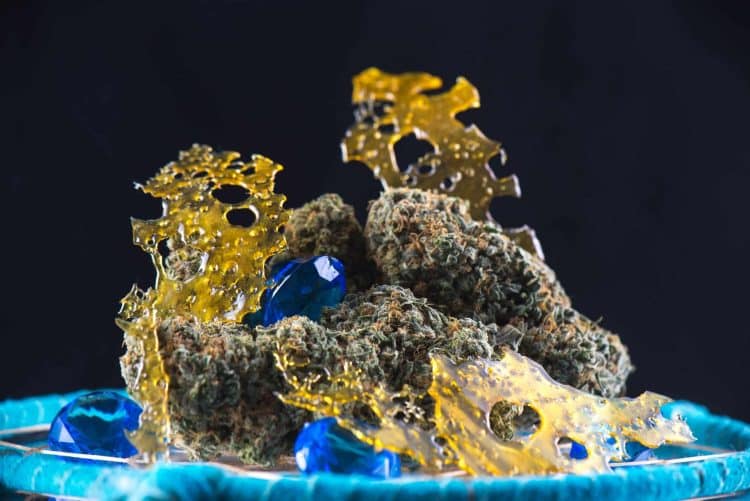I know you’ve seen them. You tried some variety of cannabis flower, that you either loved or loathed for its respective physiological effects, and so, you thought you’d try the concentrate form. After all, it was labeled as “strain-specific” (although, please…let’s continue banishing this word). But what does this mean? Does it mean that the physiological effects that really resonated with you will be reproduced? Does it mean that the terpenes captured during the extraction process were added back in to the final concentrate? Or does it mean that the product designer meticulously characterized the starting biomass, and crafted the concentrate terpene profile to contain those precise ratios?
While some companies are performing the latter process, most companies capture terpenes during the extraction process, and add them back in to the final product. A 2016 paper by Michelle Sexton and co-authors, however, compared the terpene profile native to the flower to that of the respective supercritical CO2 oil. [1] The study evaluated six plants, or chemovars, including Cherry Kush, Pineapple Kush, Purple Sour Diesel, Ripped Bubba, and Harlequin. In all, the flowers and concentrates were assessed for 42 terpenes.
Monoterpenes, like limonene or pinene, were not concentrated in the CO2 oils, whereas the terpene alcohol linalool and the sesquiterpene beta-caryophyllene were concentrated by factors of 5.3 and 5.1, respectively. This simply means that there was approximately five times the amount of the terpene in the concentrate compared to the starting biomass. Other terpene alcohols and sesquiterpenes were concentrated by factors ranging from 4.2 (α-humulene) to 9.4 (α-terpineol).
So, what does it all mean? Well, quite simply, the terpene profiles changed, and therefore were no longer representative of the specific chemistries of the initial cultivar. This means that the flavor and taste imparted by the cultivar were not replicated in the concentrate, which, in turn, means that the concentrate shouldn’t be expected to cause the same physiological effects. In short, Purple Sour Diesel flower and its corresponding CO2 oil were different products, one having nothing to do chemically with the other.
Another key safety parameter to consider is the inhalation of products with elevated levels of terpenes. The authors of this study remarked that “There is an ongoing need to evaluate upper limits for safety of inhalation for these concentrated natural products”. Additionally, only two states currently require terpene analysis (Nevada and Pennsylvania), which means that consumers have very limited information at their disposal, typically just the mistakenly transferred cultivar name, given the differences between flower and concentrate, and perhaps THC and CBD potency. In Pennsylvania, product menus will list minor cannabinoids, but typically not the predominant terpenes. The terpene profile is listed on the product, however, at that point, you’ve already made your selection, for good or ill.
In closing, Sexton and co-authors advocate “Products sold in regulated U. S. retail markets and emerging markets worldwide need to be routinely tested and labeled with rank concentrations of terpenoids so that it is possible to discriminate differences in products beyond the common names and species labels of “sativa” and “indica”. Well said, and how I yearn for this day.
Reference
[1] Sexton, M. et al. “Evaluation of Cannabinoid and Terpenoid Content: Cannabis Flower Compared to Supercritical CO2 Concentrate”, Planta Med, 2018, Volume 84(04): Pages 234-241. [journal impact factor = 2.342; cited by 9]











